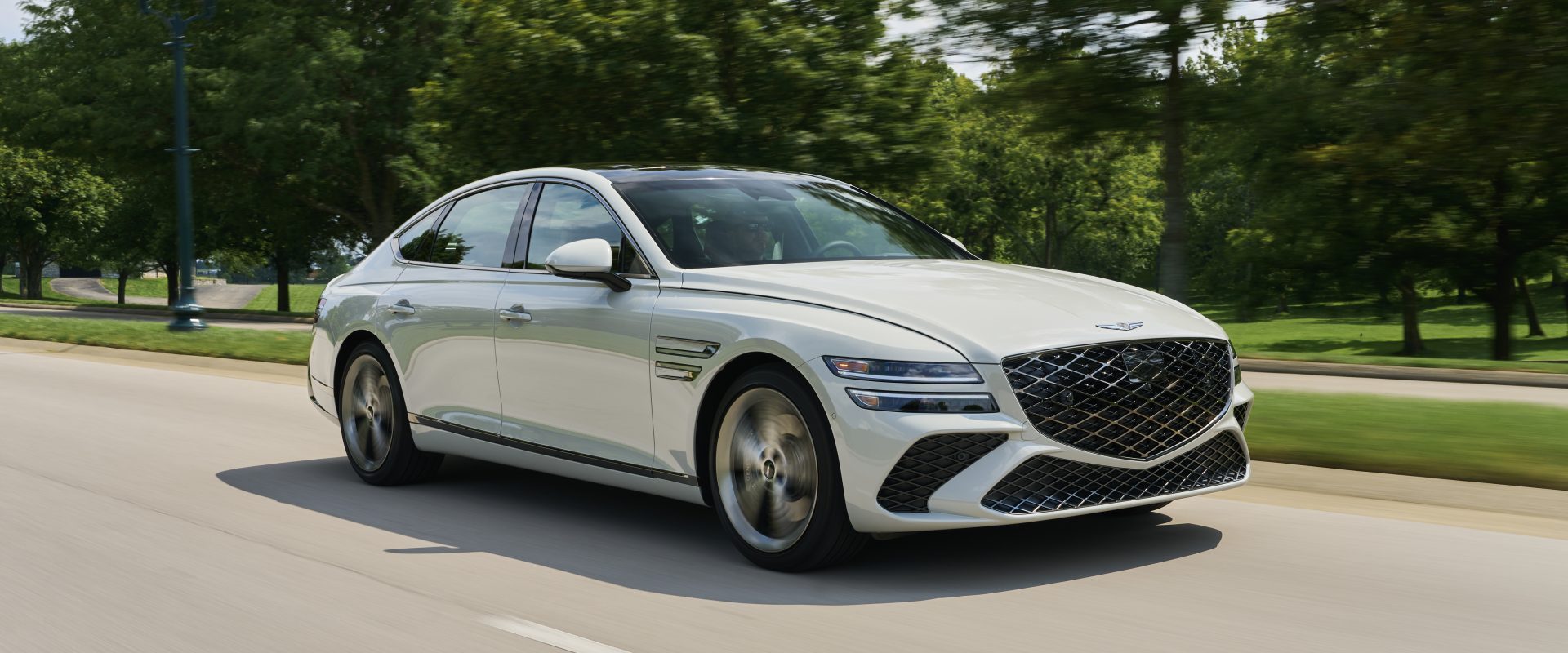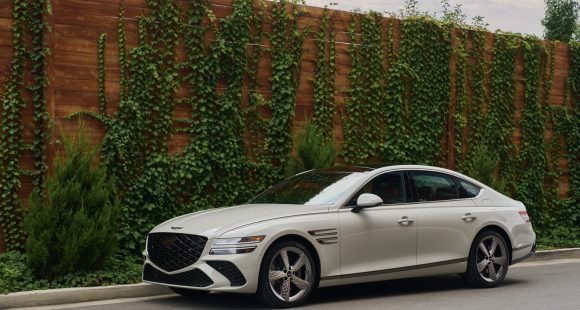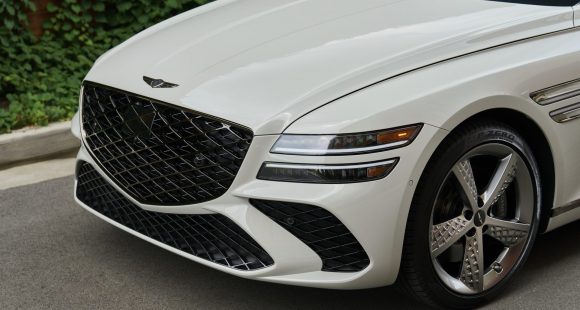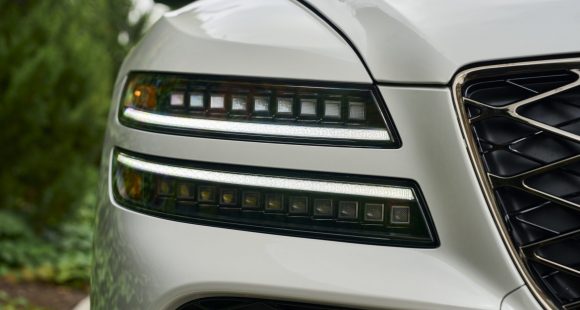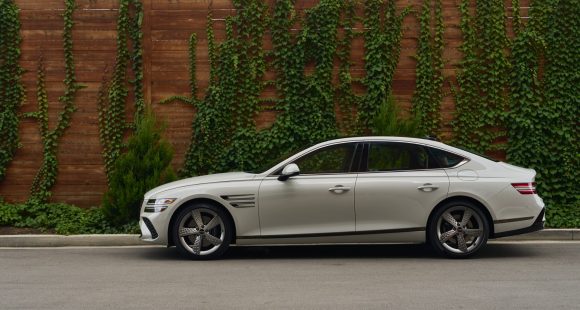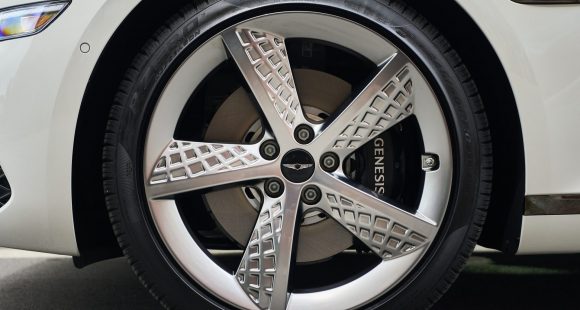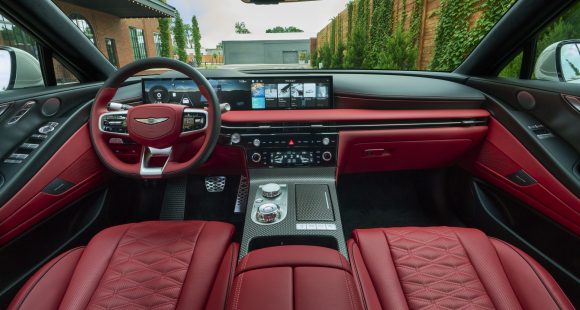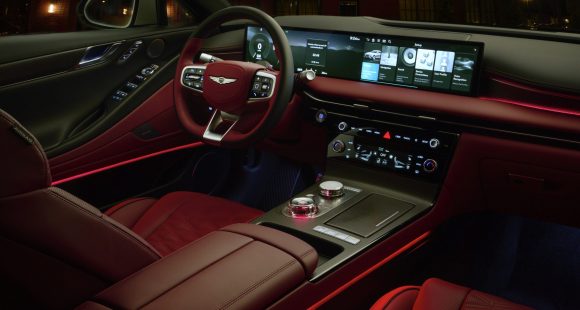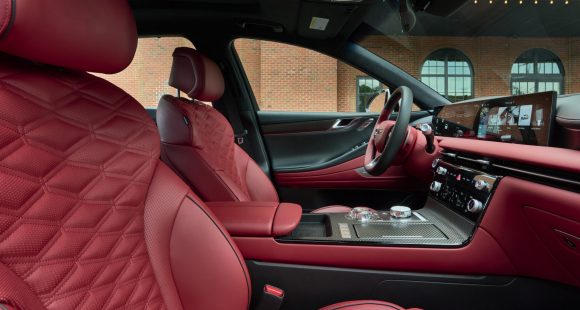2010 Ford Mustang
Like any winner, the trick to a car staying out-in-front of its rivals is a constant series of careful nips, tucks, and updates. Now, it’s been less than five years since Ford completely redesigned their original pony car, the Mustang. That rework produced a totally modern sport coupe that quickly became an industry benchmark. A benchmark that a lot of others are now taking an aim at. So, it’s time for a nip, tuck, and maybe a whole lot more.
With the 2010 Mustang, Ford has actually gone far beyond the typical mid-cycle freshening. The result is a totally up-to-date interpretation of the original pony car, with a trimmer, sharper, more muscular form.
The effort readies the Mustang - coupe, convertible, and glass hardtop - to face-off against a herd of rivals like the new Chevrolet Camaro, Dodge Challenger, and even the Nissan 370Z.
While the platform is largely unchanged, the new Mustang is wrapped in new and much sharper sheet metal. The result is more revisited ‘69 than ever.
A more swept back front end and narrower grille are adorned by an energized pony logo - charcoal on our GT, chrome on the V6. On the GT, the grille is also home to retro fog lamps, flanked by turn signals, and classic round headlamps at the edges, and the long hood is now landscaped with chiseled lines and a Ford signature power dome.
 The new Mustang’s more svelte profile is punctuated by finely drawn wheel flares and a more defined character line that slices rearward.
The new Mustang’s more svelte profile is punctuated by finely drawn wheel flares and a more defined character line that slices rearward.
The fastback greenhouse still leads back to rear quarter windows and chopped corners. But around those corners sit new taillights with sequential turn signals, a novelty not seen on a Ford product since the 1970’s, all finishing with bolder rear badging, and on the Mustang GT, a deck lid spoiler, and rolled chrome exhaust tips.
All wheels are new and up an inch, ranging from 17s to 19s.
This revisionist dream really picks up speed inside where the classic twin-cockpit cabin is far more refined, dare we say less “domestic” than before.
While the new one-piece instrument panel downplays the classic twin-cockpit theme, it plays up softer touch points, and vastly improved fit and finish. Chrome-ringed round gauges and added aluminum trim highlight the upscale appearance, as does the pony-stamped steering wheel with aluminum spokes and cruise plus available audio controls.
The circular center air vents have been replaced by rectangular ones, which are positioned atop an all-new center stack.
Here you’ll find user friendly-technologies such as the latest version of Ford Sync with 9-1-1 Assist and Vehicle Health Report, as well as an available eight-inch navigation screen with back-up camera.
This year MyColor expands beyond the gauge cluster, allowing adjustable ambient lighting from cup holders to sill plates, using a palette of 125 hues.
As before, the rear seat remains 2+2 tight, but retains its split fold to add versatility to the 13.4 cubic foot trunk.
The new Mustang sees far less change in the engine bay, but that’s okay. The base 4.0-liter V6 remains at 210 horsepower and 240 pound-feet of torque. The GT’s standard 4.6-liter V8 gets a slight boost thanks to a cold air induction system similar to the Bullitt, and now rates at 315 horsepower and 325 pound-feet.
But if monster performance is what you seek, Ford has also announced a 2010 Shelby GT500. Its supercharged 5.4-liter V8 is expected to make a whopping 540 horses and 510 pound-feet of torque.
The standard Mustang pushes power rearward through a 5-speed manual or 5-speed automatic. The manual’s upgraded shifter has a more solid feel - less clunky, if you will.
 The same goes for the suspension, which has been retuned for better ride and handling. Springs and shocks have been adjusted, but it’s still defined by the same MacPherson strut design up front, and a three-link geometry live axle with panhard rod in the rear. A stiffer suspension package using GT500 hardware and summer performance tires will be available shortly.
The same goes for the suspension, which has been retuned for better ride and handling. Springs and shocks have been adjusted, but it’s still defined by the same MacPherson strut design up front, and a three-link geometry live axle with panhard rod in the rear. A stiffer suspension package using GT500 hardware and summer performance tires will be available shortly.
We sorted out a Mustang GT by carving up the canyon roads around Malibu, California. It certainly is tighter and more balanced than ever before. Both body roll and understeer have been minimized, all while enhancing ride quality, which is not just smoother, but also quieter, that is until you test the V8’s wonderful throttle volume.
Electronic stability control joins traction control and ABS as standard. The stability control can be turned on and off, and has a Sport Mode on the GT.
Pricing for the 2010 Mustang is up slightly but still covers a moderate spread, from $21,845 for the base V6, to $28,845 for the V8 GT. Convertible base prices are 2 grand higher.
But this new horse does have to be fed. Government Fuel Economy ratings are 16 city/24 highway for the V6 automatic, and 15 city/22 highway for the GT V8 automatic.
The 2010 Ford Mustang is more of a looker and doer than ever. The original pony car has answered its critics with a leaner and meaner makeover, adding both a vastly improved interior and driving experience. This steed is nicely done, and clearly ready for the pony car wars that are sure to follow.
Specifications
- Engine: Gt 4.6-Liter V8
- Horsepower: 315
- Torque: 325 Lb Feet
- EPA: 16 MPG City/ 24 MPG Highway
2025 Genesis G80
New Interior And New Tech Elevates G80 Sedan
Talk about bad timing. This second-generation G80 debuted at the height of a global pandemic. But that hasn’t stopped Genesis or this Bentley-on-a-budget sedan. In fact, since then, Genesis has unveiled a spectacular all-electric version and now given all G80s a makeover. So, let’s find out what a better and better-timed new G80 is ready to deliver.
Breaking into the luxury sedan scene requires going up against traditional brands with long pedigrees and legions of loyal buyers. But Hyundai has never shied away from a challenge, and has made steady progress with their Genesis brand, and hopes that a revised 2025 G80 midsize sedan will be their next step up.
Styling matters more when you’re the upstart, and the Genesis Athletic Elegance theme changes very little for ’25; just a new grille, slightly reshaped bumpers, new wheels ranging from 18 to 20 inches, and an updated color palette. The G80’s unique two-line LED headlamps get revised Micro Lens Array technology that boosts performance while minimizing the brightness for oncoming drivers.
Changes inside are much more significant with an entirely new dash and console, eliminating both the hooded gauge panel and dashtop wide info screen. Merging them together into one 27-inch wide LG panoramic display than runs from behind the steering wheel to over the center stack. There’s a bigger and more comprehensive control panel in the center stack; while the console gets less armrest coverage, more space for storage, and reshaped cupholders. The wider display is still a touchscreen, but there is also a console mounted controller if you prefer to keep it fingerprint free. Both options work well, but the controller is still too easy to confuse with the dial-like shifter.
Materials are on par if not a notch above most European luxury rivals, and there are 18 speakers to crank out 1,400 watts of premium sound from Bang & Olufsen. Top Sport Prestige trim comes with Nappa leather seats, carbon fiber trim, micro-suede materials for the headliner and pillar covers, heated armrests, head-up display, and upgraded active safety features. Front seats are immensely comfortable without feeling overly soft, and there’s plenty of comfort and room for adults in the back seat.
More Bentley than Benz; streaking down the track with European-style solidity that gives you very little indication of the high speed you’re traveling at.
Same powertrains as last year. Base power comes from a 300-horsepower 2.5-liter turbo-four; the upgrade is this 3.5-liter twin-turbo V6 that outputs 375 horsepower and 391 lb-ft of torque. Both are hitched to standard all-wheel drive. At our Mason Dixon Dragway test track, the AWD delivered enough grip for consistent slip-free launches. We hit 60 in 5.0 seconds flat. Run after run, the 3.5T pulled as strong as it sounds. All G80s work with the same paddle-shift eight-speed automatic transmission, and while shifting was silky smooth on the street, here on the track with Sport Mode and wide-open throttle they were noticeably firmer and quicker.
It was a very surreal experience in the cabin. More Bentley than Benz; streaking down the track with European-style solidity that gives you very little indication of the high speed you’re traveling at. For us, that was 105 mph in 13.4 seconds at the quarter. In addition to the G80’s Sport Mode that tightens steering, improves throttle response, adjusts shifting points, firms up the suspension, and reconfigures stability system parameters; Sport Prestige trim adds rear-wheel steering and an electronic limited slip differential. But, even with all of that, it didn’t feel overly sporty in our handling course. Now, we were able to comfortably carry quite a bit of speed through the cones, but there was just an overall soft, somewhat disconnected and heavy presence that had us unsure of how hard we could push. Sport Prestige also adds upgraded performance brakes. They were plenty capable, bringing this 4,600-lbs. luxury liner consistently down from 60 in just 104 feet with little fade.
Government Fuel Economy Ratings for the six-cylinder are 16 City, 24 Highway, and 19 Combined. We averaged a good 21.3 mpg of Premium. Still, that’s a slightly below average Energy Impact Score, using 15.7 barrels of oil annually with 7.8 tons of CO2 emissions.
Considering the amount of luxury packed into the G80, its $58,350 starting price, even though slightly higher than last year, remains pretty remarkable. It’s a substantial step up to the 3.5T though, as it begins at $70,850.
Genesis has existed as a standalone luxury brand for just less than a decade, and it has indeed been making steady progress into what is surely the hardest segment of all to master. The 2025 Genesis G80 sedan continues to impress and is a great option for luxury-minded buyers who prioritize true value over badges.
Specifications
As Tested
- Engine: 3.5-liter twin-turbo V6
- Transmission: eight-speed automatic
- Horsepower: 375
- Torque: 391 lb-ft
- EPA: 16 City | 24 Highway | 19 Combined
- 0-60 mph: 5.0 seconds
- 1/4 Mile: 13.4 seconds at 105 mph
- Braking, 60-0 (avg.): 104 feet
- MW Fuel Economy: 21.3 mpg (Premium)







